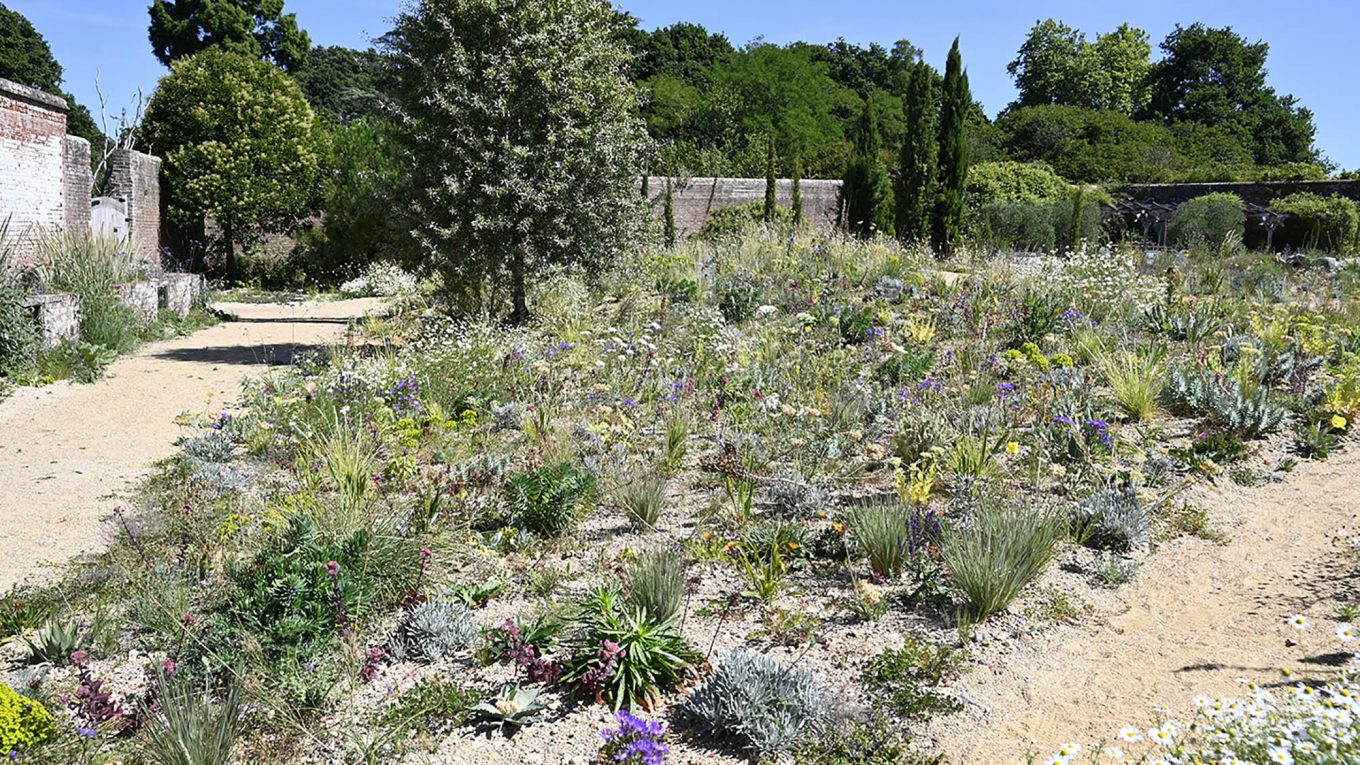Rewilding the garden – Knepp style
Last summer I had the chance to visit the rewilded walled garden at the ground breaking Knepp Estate in Sussex. I have been keen to apply some of the principles of rewilding to my walled garden and jumped at the opportunity to go on a ‘rewild your garden safari’ at Knepp. And what an amazing project it turned out to be – truly inspirational. Actually, I often use the term ’mind blowing’ and ‘challenging’ when describing this garden in my garden talks.
So what is it about? Basically, it’s the transformation of a traditional walled garden with croquet lawn and herbaceous beds into a climate-resilient space that encourages biodiversity. The masterminds behind the project – Tom Stuart-Smith, Professor James Hitchmough, Professor Mick Crawley and Jekka McVicar – produced plans to transform the traditional 1.3 acre walled garden with its manuicured croquet lawn, swimming pool and herbaceous beds, and along with the kitchen garden, into a diverse and multi-layered space that’s both rich in biodiversity and also sustainable.
Before we ventured into the garden Head Gardener Charlie Harpur introduced the rewilding project and its aims, explaining that habitats are like mosaics with lots of interconnections that are continually shifting and changing. In a natural system, the process of rewilding involves the 3Cs – cores, corridors and carnivores (keystone species) to recreate natural processes. In a managed garden, it is the gardener who has the keystone role, with weeding likened to the rooting of pigs to create disturbance, while pruning is a form of grazing.
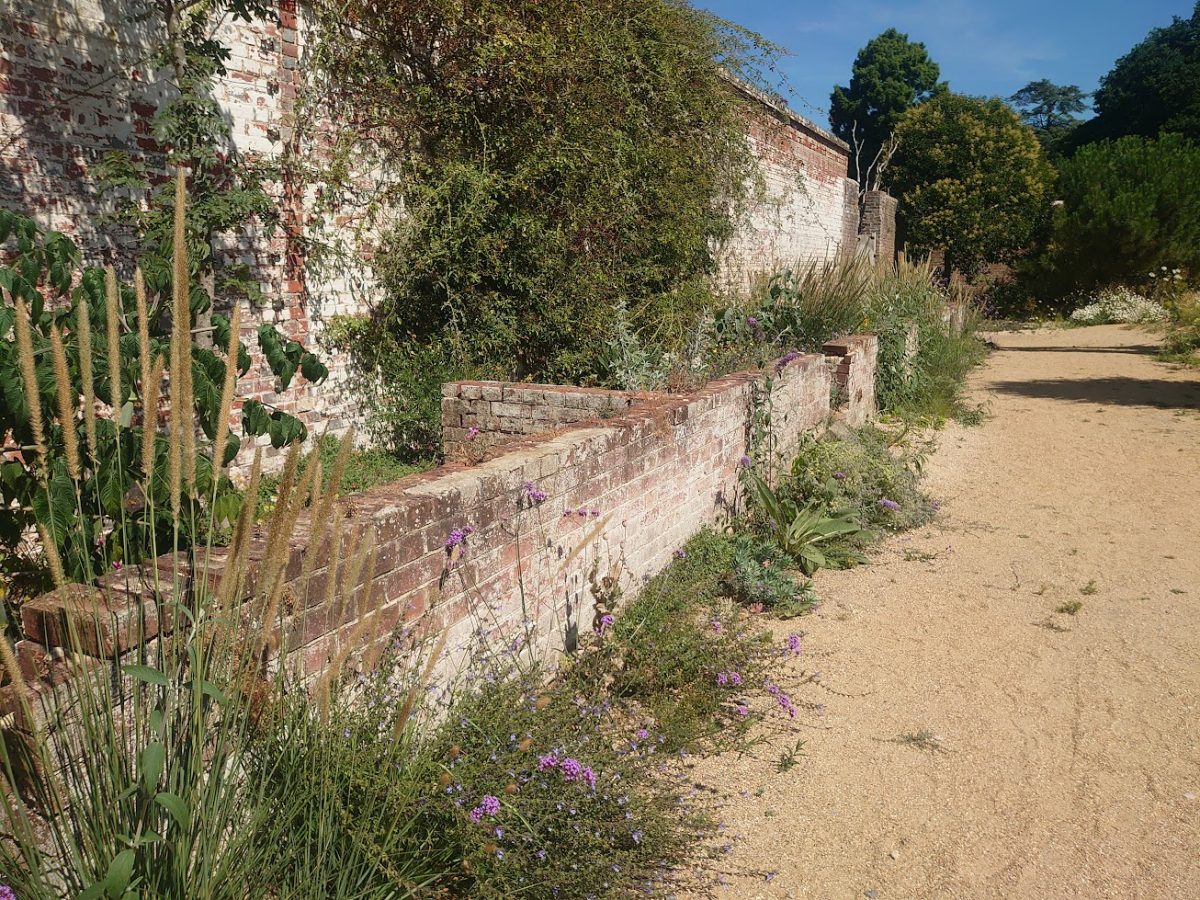
Before the process got underway, naturalists carried out a baseline biodiversity study to assess what there already and this included soil samples. And this helped guide some of their decisions. For example, the old raised brick-built peach beds along the walls on one side of the garden were retained as the survey had found them to be rich in diversity. In fact, it is surprising just how much diversity of life can be found in old structures – under and on old bricks, amongst the mortar etc.
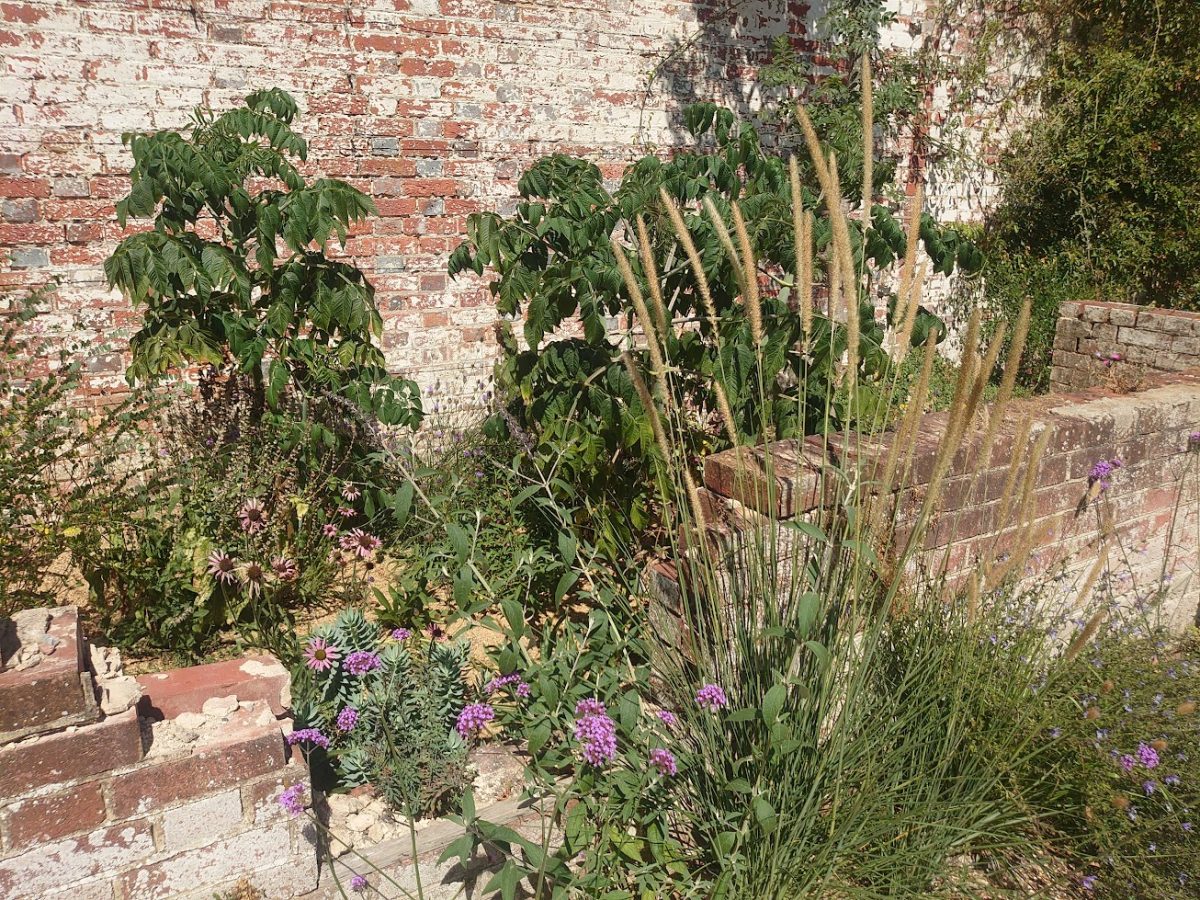
Some of the features / strategies include
- The selection of plants that require minimal or no irrigation, minimal fertiliser and maintenance
- Use of pollinator plants, especially those for the less well known pollinators, such as night flying moths, wasps, hoverflies and other natural predators
- Bee hives – Bee Kind types and those for solitary bees
- Heaps of dead wood and fallen trees so the wood can rot down over time
- The inclusion of a more varied topography such as humps and dips
- Allowing molehills and ant lines to create areas for colonisation
- Having areas that differed in pH, for example, alkaline concrete rubble and acidic sand
So, into the walled garden. Last summer there has been few reports in the garden press because the garden was so new and I wasn’t sure quite what to expect. I had seen videos of the landscaping work and the planting out of thousands of plants, but that’s all. It was one of the hottest days of the year and we were met with the glaring light reflecting from the gravel and crushed concrete mixes – it looked almost beach-like with sandy paths. The planting was new, so the plants were small and there was a lot of aggregate but it was clear that there was a lot to come and in time as the shrubs and trees would become established, the light levels would be reduced and an understorey will develop – just like a plant succession from bare ground to climax woodland.
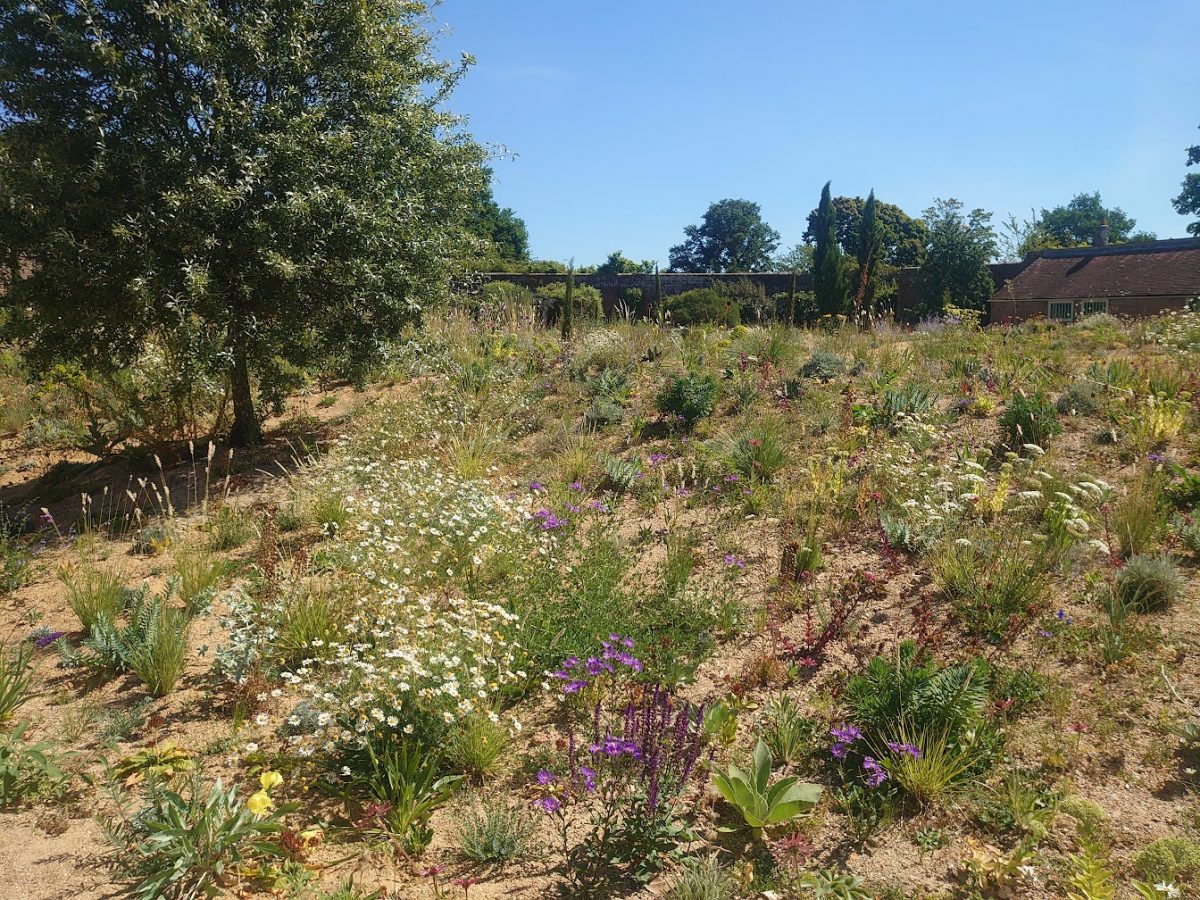
The various areas of the garden had different topography, as well as varied mixes of soil / sand / gravel / crushed aggregate to create different conditions. For example, the mounds of free draining crushed concrete and sand will slow down the growth rate of plants, allowing a greater diversity to be maintained with less chance for plants to become thugs and outcompete their neighbours.
In the middle was a wide hollow area to trap water and create an ephemeral pond. In winter, it will fill with water and then slowly drain away, so the plants here need to be able to cope with a lot of water for a short time.
We walked through the garden following the ‘dirty paths’ – gravel and sand paths finished off with a layer of Breedon gravel, with the self seeded plants and creeping thyme creating a lovely soft edge between the beds and the paths. Love them!
Initially, the aim is to allow the plants to get established which will mean thinning and removal where necessary. But in time, once the plants are established, the gardeners will allow more species to come in and others to disappear.
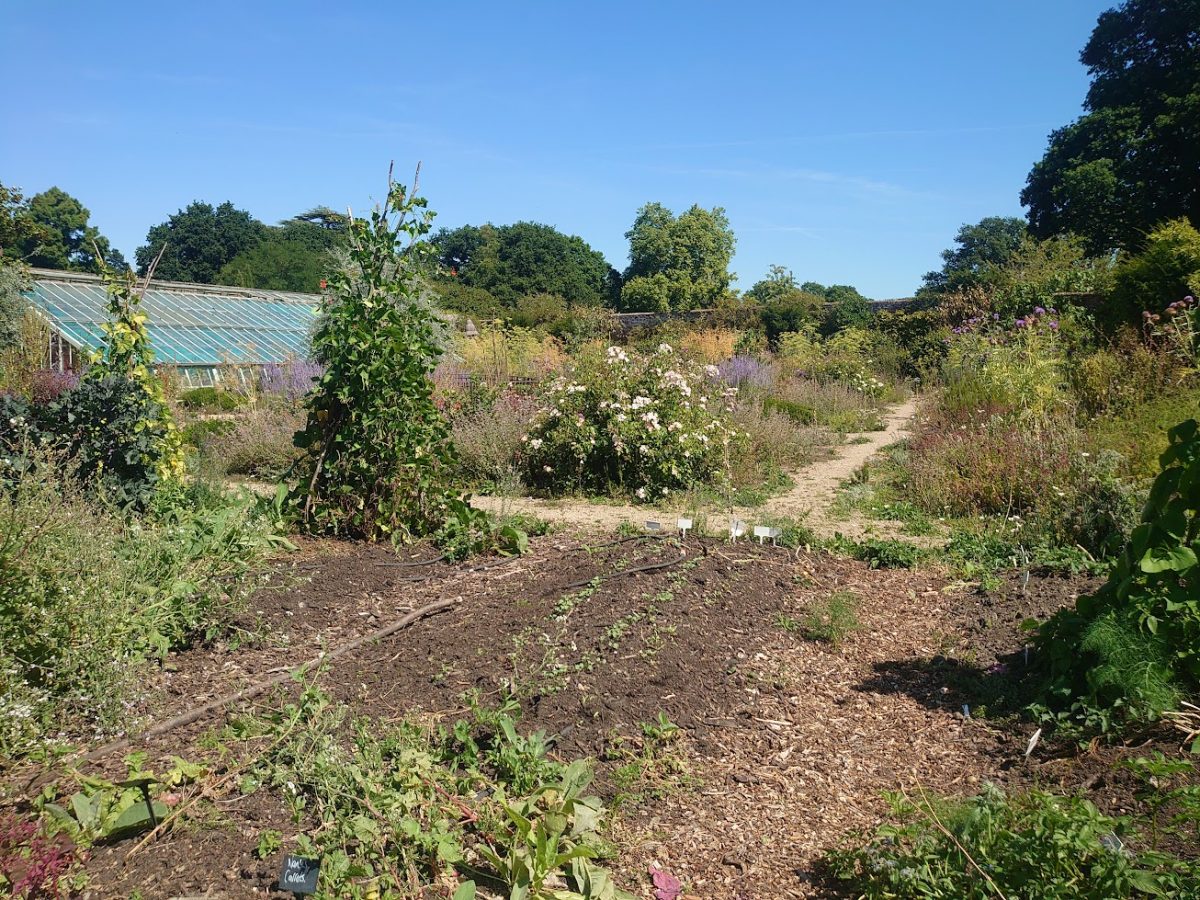
Around the corner was the old kitchen garden with its massive greenhouse and vegetable beds. The aim here was a bit more conventional and shows what is possible in an existing garden. Here the plan is to create an edible kaleidoscope with no dig raised beds of higher fertility linked to low fertility gravel paths. I love these transition zones. Anybody familiar with the principles of permaculture will know it’s these transition zones that host the greatest biodiversity and hence are so critical in any garden.
This is such a fascinating project. Its just what we need when we are looking to make our growing spaces more climate-change resilient. And I have taken some of the ideas to heart and will be growing in recycled crushed concrete this year – watch this space.
I will look forward to visiting again and again over the years to see the ecological progression
I’ll end with something that Charlie Harper said when he introduced the project “Any gardener with an outdoor space or balcony has the opportunity to be part of the biodiversity recovery – space is not important”. That’s so true and we all have a role to play….
Visit the garden
If you have been inspired to visit this mind blowing project you can go on a garden safari https://knepp.co.uk/view/safaris/rewild-your-garden-full-safari/

